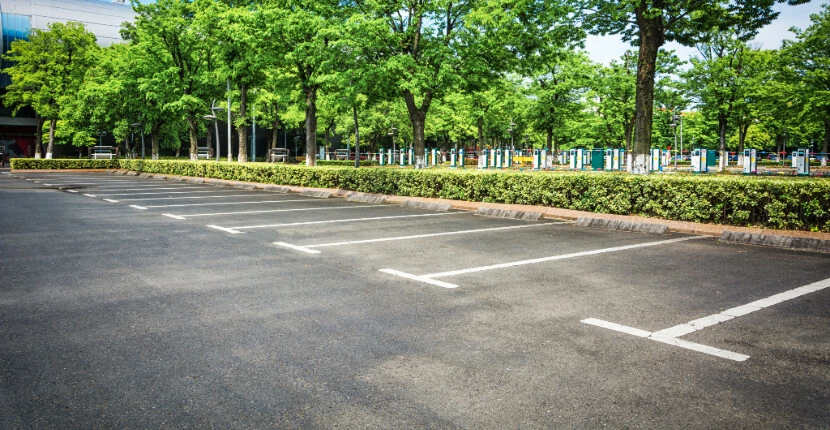
Car Park Surfacing
Contact UsAt Anti Skid Surfaces, we specialise in high-quality anti-skid car park surfacing, providing durable, slip-resistant solutions for safer parking areas.
With years of experience, we deliver expert surfacing installations that enhance traction, prevent skidding, and ensure compliance with UK safety regulations.
Whether you need high-friction coatings for ramps, pedestrian walkways, or entire parking lots, our team uses premium materials and advanced techniques to create long-lasting, weather-resistant surfaces. From commercial car parks to private facilities, we tailor our solutions to meet your specific needs.
Contact us today for a complimentary consultation and discover how we can enhance the safety and performance of your car park.
What is Anti-Skid Car Park Surfacing?
Anti-skid car park surfacing is a specialised surface treatment designed to improve traction and reduce the risk of skidding in parking lots.
High friction surfacing enhances safety for both vehicles and pedestrians, particularly in high-traffic areas, ramps, and zones prone to adverse weather conditions.
Why is Anti-Skid Car Park Surfacing Important?
Anti-skid car park surfacing is essential for ensuring safety, durability, and compliance in parking areas.
Applying a high-friction surface treatment reduces the risk of accidents by providing superior grip for vehicles and pedestrians, especially in high-traffic zones or areas exposed to harsh weather.
How much does Anti-Skid Car Park Surfacing Cost ?
The average cost of anti-skid car park surfacing is £20 to £80 per square metre.
The price of anti-skid car park surfacing varies depending on several factors, including the size of the area, the type of materials used, and the surface preparation required.
What are the Benefits of Anti-Skid Surfaces for Car Parks?
Anti-skid surfacing is a crucial investment for car parks, improving safety, durability, and efficiency. It enhances traction for both vehicles and pedestrians, reducing accident risks while ensuring long-term surface performance.
Prevents Skidding & Improves Safety: High-friction coatings provide better tyre grip, reducing the likelihood of skidding, particularly in wet, icy, or high-traffic areas.
Reduces Pedestrian Slips & Falls: Anti-skid surfaces improve foot traction, lowering the risk of slips—especially in designated walkways, crossings, and disabled parking bays.
Enhances Traffic Control & Efficiency: Clearly marked, slip-resistant surfaces help guide vehicles smoothly through car parks, minimising congestion and preventing sudden braking.
Durable & Weather-Resistant: Withstands heavy vehicle loads, oil spills, and harsh weather conditions, extending the lifespan of the car park and reducing maintenance costs.
Compliance with Safety Regulations: Meets UK health and safety standards, ensuring legal compliance for businesses, commercial properties, and public parking facilities.
Customisation for Designated Areas: Available in various colours and finishes for clear zoning, including EV charging bays, pedestrian crossings, cycle lanes, and loading areas.
Installing anti-skid surfacing not only enhances safety but also improves the overall functionality and longevity of a car park. It’s a cost-effective way to minimise risks while maintaining a professional, well-maintained appearance.
How is Anti-Skid Car Park Surfacing Installed?
The installation of anti-skid car park surfacing follows a structured process to ensure durability, safety, and compliance. The method used depends on the existing surface condition, traffic levels, and specific site requirements.
Surface Preparation: The first step is to prepare the surface by thoroughly cleaning it to remove dirt, oil, and debris. Any cracks, potholes, or uneven areas must be repaired to create a smooth and stable base. Proper surface preparation is essential to ensure the anti-skid coating adheres effectively and lasts longer.
Priming the Surface: Once the surface is clean and repaired, a high-quality primer is applied. This primer acts as a bonding agent between the existing surface and the anti-skid material, enhancing adhesion and ensuring long-term durability. Skipping this step can lead to poor adhesion and premature surface wear.
Application of Anti-Skid Coating: The anti-skid coating, typically made from a high-friction resin-based material such as epoxy or polyurethane, is then applied. This resin layer provides the base for the non-slip aggregates and is spread evenly across the designated area. The type of resin used will depend on factors such as traffic levels, weather conditions, and specific site needs.
Broadcasting High-Friction Aggregate: While the resin is still wet, high-friction aggregates such as calcined bauxite are spread over the surface. These aggregates are essential for providing the necessary grip to reduce skidding and enhance safety. The amount and type of aggregate used will determine the level of skid resistance achieved.
Curing & Excess Aggregate Removal: After the aggregate has been applied, the surface is left to cure for a specified period, typically between 4 to 8 hours, depending on environmental conditions. Once fully cured, any excess aggregate is removed to create a clean, even, and slip-resistant finish.
Line Marking & Finishing Touches: If required, additional features such as coloured coatings, safety markings, and designated parking bay lines are applied. These markings help guide traffic flow, improve organisation, and ensure compliance with parking regulations. Customisation options allow for clear zoning, such as pedestrian walkways, disabled parking bays, and electric vehicle charging points.
